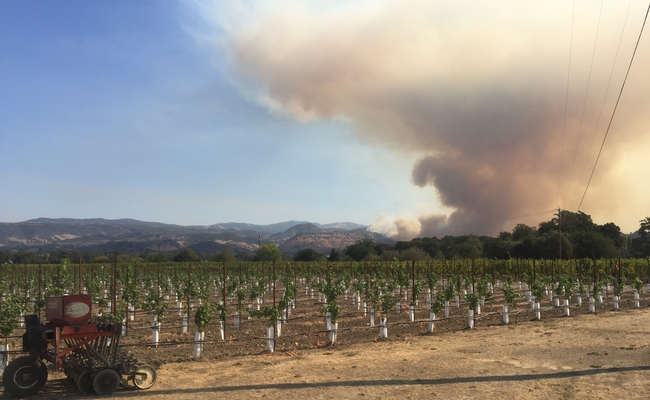To help people prepare, CAL FIRE has a checklist for evacuation online at http://www.readyforwildfire.org/Evacuation-Steps. UC Agriculture and Natural Resources scientists contributed to the research behind the recommendations.
A one-page checklist online at http://disastersafety.org/wp-content/uploads/2016/07/IBHS-Wildfire-Last-Minute-Checklist.pdf, also based on research by UC ANR scientists, is available from the Insurance Institute for Business & Home Safety.
Napa County residents have been told to be prepared in case they need to leave.
“We have team members tending to their own homes and or family's needs, providing support in shelters, and being available for immediate clientele needs in any way they can,” said David Lewis, UC Cooperative Extension director in Napa and Marin counties. “We look forward to calling upon UC colleagues with more experience to support our communities in the long recovery period. For the immediate future, we will stay focused in our efforts to support evacuation and shelter efforts – personal safety and needs are priority one until the fires no longer pose a threat.”
The main thing to remember when preparing to evacuate is to protect your life first.
“Don't die trying to prepare your house before you leave,” said Yana Valachovic, UC Cooperative Extension director and forest advisor in Humboldt and Del Norte counties. “Monitor the situation, watch the wind directions, and listen to all emergency personnel.”
To receive timely updates on fire conditions, Brian Oatman, UC ANR Risk & Safety Services director, uses Nixle. “While some communication methods may not work due to outages, the more sources we have, the better the chance that the message gets through,” Oatman said. To sign up for text alerts, visit http://www.nixle.com or text your zipcode to 888-777 to opt-in.
“We have coordinated with CropMobster to create a resource list at https://sfbay.cropmobster.com/bay-area-fire-resources where anyone can post any needs or offer help of any kind,” said Stephanie Larson, UC Cooperative Extension director in Sonoma County. “UCCE Sonoma has also created a Disaster Recovery for Agriculture Operations at http://cesonoma.ucanr.edu/Disaster_Resources for homeowners and managers of rangelands. UCCE is working closely with Sonoma County to provide UC ANR resources to assist with the recovery of our community that has been devastated by this fire.”
In Yuba County, the Cascade fire is 45 percent contained as of Oct. 12. “Evacuation orders are being lifted in parts of Yuba County,” said Janine Hasey, UC Cooperative Extension director for Sutter and Yuba counties. “Kate Wilkin, our new UC Cooperative Extension forestry, fire science and natural resources advisor in Sutter, Yuba, Butte and Nevada counties, has assembled resources for residents who are returning to their homes at http://cesutter.ucanr.edu/Fire_Information. We will be updating the website with more recovery information in the coming days.”
